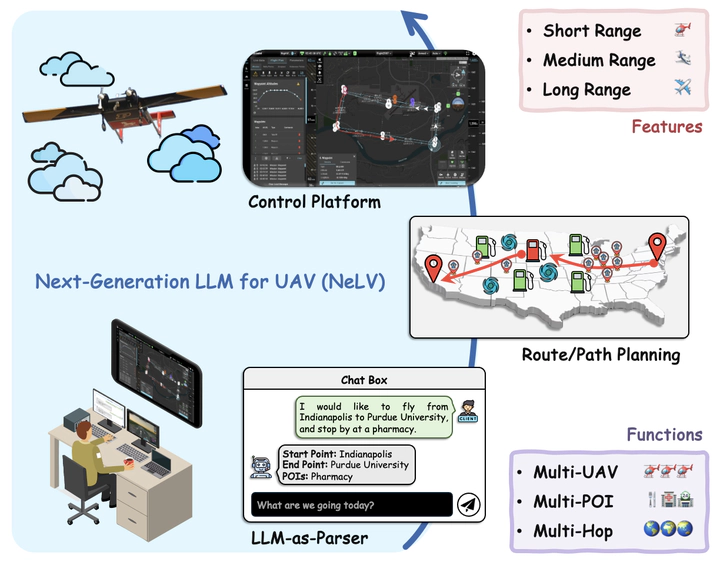
Abstract
With the rapid advancement of Large Language Models (LLMs), their capabilities in various automation domains, particularly Unmanned Aerial Vehicle (UAV) operations, have garnered increasing attention. Current research remains predominantly constrained to small-scale UAV applications, with most studies focusing on isolated components such as path planning for toy drones, while lacking comprehensive investigation of medium- and long-range UAV systems in real-world operational contexts. Larger UAV platforms introduce distinct challenges, including stringent requirements for airport-based take-off and landing procedures, adherence to complex regulatory frameworks, and specialized operational capabilities with elevated mission expectations. This position paper presents the Next-Generation LLM for UAV (NeLV) system—a comprehensive demonstration and automation roadmap for integrating LLMs into multi-scale UAV operations. The NeLV system processes natural language instructions to orchestrate short-, medium-, and long-range UAV missions through five key technical components: (i) LLM-as-Parser for instruction interpretation, (ii) Route Planner for Points of Interest (POI) determination, (iii) Path Planner for waypoint generation, (iv) Control Platform for executable trajectory implementation, and (v) UAV monitoring. We demonstrate the system’s feasibility through three representative use cases spanning different operational scales: multi-UAV patrol, multi-POI delivery, and multi-hop relocation. Beyond the current implementation, we establish a five-level automation taxonomy that charts the evolution from current LLM-as-Parser capabilities (Level 1) to fully autonomous LLM-as-Autopilot systems (Level 5), identifying technical prerequisites and research challenges at each stage.